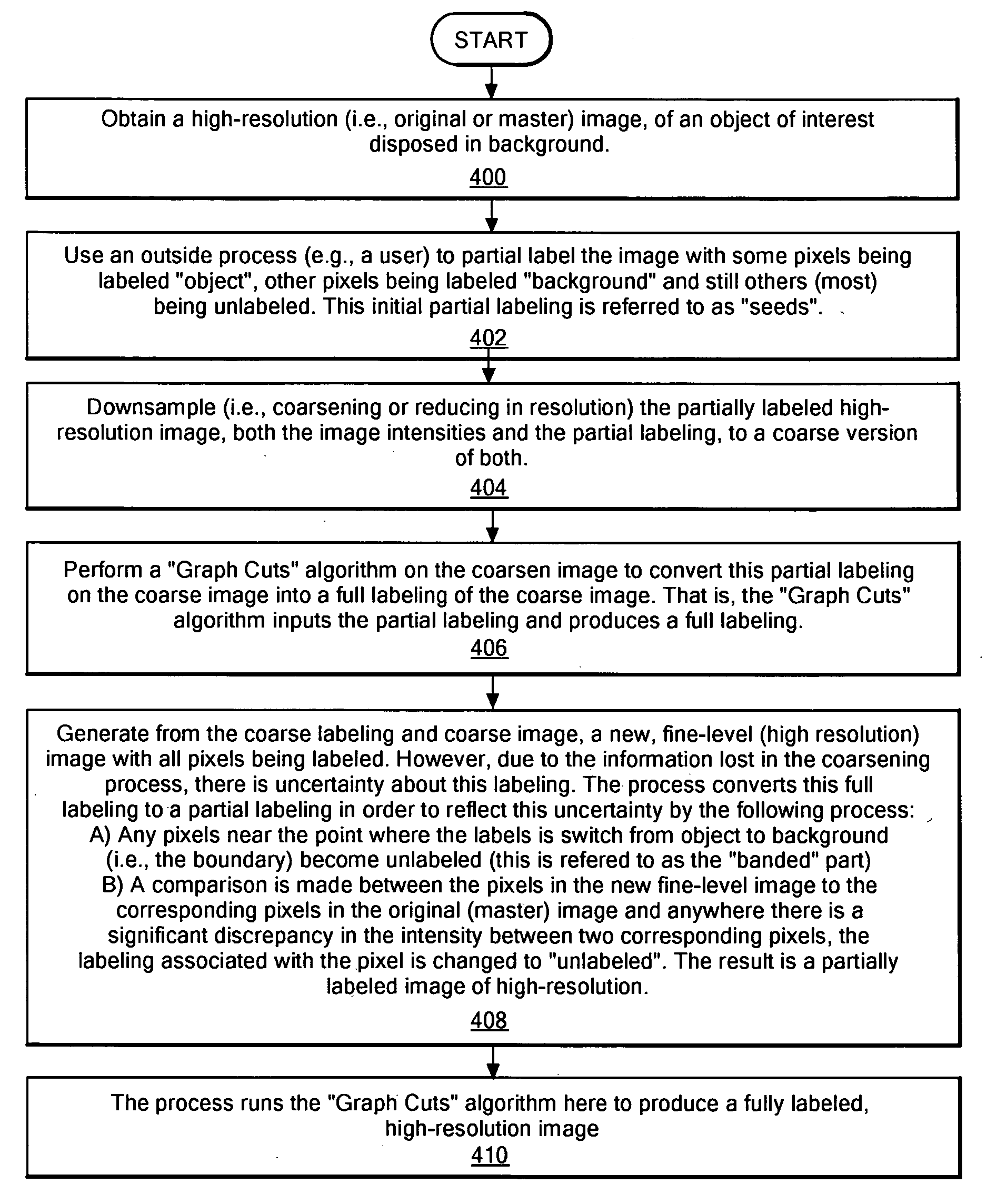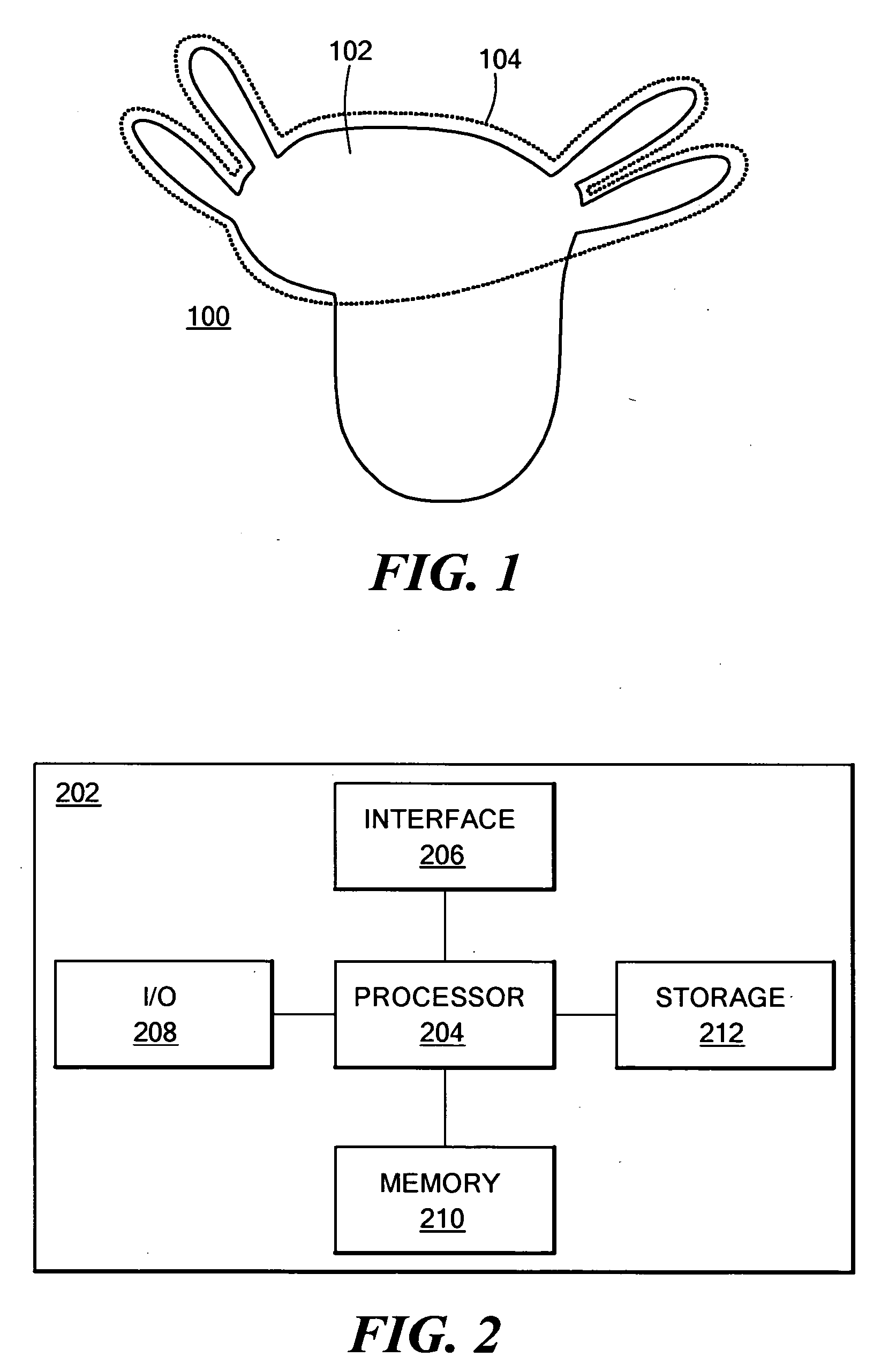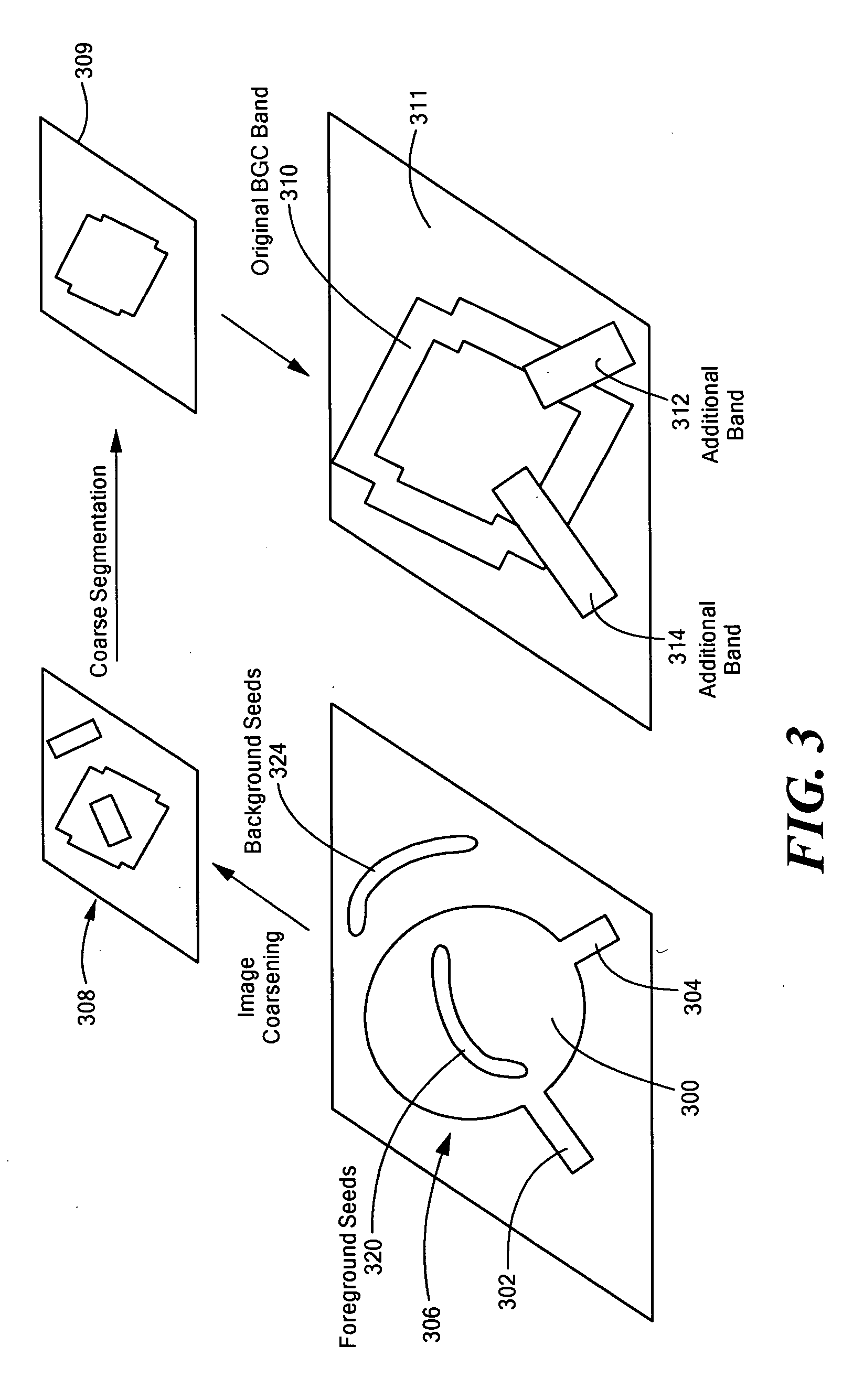[0009]More particularly, a
heuristic referred to as Banded Graph Cuts (BGC) has recently been introduced for producing fast, low-memory approximations to graph cuts, see a paper by H. Lombaert, Y Sun, L. Grady and C. Xu, entitled “A multilevel banded graph cuts method for fast
image segmentation”, published in Proceedings of ICCV 2005, volume I, pages 259-265, Beijing, China, 2005, IEEE 1.23 and published U.S.
Patent Application Pub. No. 2006 / 015934 A1, published Jul. 20, 2006, application Ser. No. 11 / 313,102 filed Dec. 20, 2005, entitled “Multilevel
Image Segmentation”, inventors Yiyong Sun, Herve Lombaert, Leo Grady and Chenyang Xu, assigned to the same assignee as the present
patent application, the entire
subject matter thereof being incorporated herein by reference. The BGC method produces fast, low-memory approximations to graph cuts wherein a hierarchical image
pyramid is constructed by repetitively downsampling (i.e., reduced resolution or coarsening of) the original, highest resolution image a specified number of times. Foreground (i.e., object of interest) and background seeds on the original high-resolution image are also downsampled. In the smallest image (the one width the least resolution and hence fewest pixels), a full
graph cut algorithm is run, and the resulting segmentation is iteratively propagated toward the fine-level resolution using any number of standard, well-known methods. In general, each pixel of the coarse-level image is identified with several pixels on the fine-level image which are all given the same segmentation
label as the associated coarse-level pixel. Since the segmentation is performed with the fewest number pixels, the computation time is reduced compared to segmentation with the original highest-resolution image. For each level of downsampling, the boundary of the segmentation is projected onto the next, fine-resolution, level while being dilated (i.e., the original boundary is converted to a “band”) by a specified amount d to create a band around the object. The
graph cut algorithm is then run for this sparse (i.e., downsampled) graph. Hence, a tradeoff between the memory / time requirements and segmentation accuracy (i.e., inaccuracies resulting from the
processing of downscaled data) is introduced through specification of the maximum
pyramid level (i.e., the number of downscalings) and dilation size. Although this
heuristic greatly reduces the memory and time consumption, in some applications it is desirable to detect thin structures (i.e., objects) such as vessels in
medical imaging data.
[0011]The BGC algorithm is not the only approach to increasing the computational efficiency of Graph Cuts. The Lazy Snapping algorithm described in a paper by Li, Y. et. al. “Proceedings of ACM SIGGRAPH 2004 (2004) 303-308 performs a pre-segmentation grouping of the pixels using a
watershed transform described by Roerdink et al., “The
watershed transformation: Definitions, algorithms, and parallelization strategies”, Fund. Information 41 (2002) 187-228 and treats each
watershed basin as a supernode. Graph Cuts is then run on the graph of supernodes. By drastically reducing the number of nodes in the graph, this approach greatly increases the speed of Graph Cuts in practice. However, the computational savings are more difficult to predict with this approach since the number of supernodes is highly image dependent. Additionally, the authors of this approach offer no characterization of when to expect this coarsening approach to succeed or fail to produce the same
cut given by full-resolution Graph Cuts.
[0013]The invention is an improvement in the BGC algorithm that preserves its computational advantages, but produces segmentations much closer to Graph Cuts when the segmentation target contains thin structures. This modification is based upon the use of a difference image when coarsening to identify thin structures that may be included into the band during the segmentation. The modification of the BGC algorithm allows for the
accurate segmentation (relative to full-resolution Graph Cuts) of thin objects while preserving the computational advantages of BGC. The modification is born of the observation that thin structures are lost as a result of the coarsening operation involved in BGC. The invention uses a
Laplacian pyramid to recover this lost information and extend the band such that high-threshold pixels are included. In this manner, the additional computational burden is slight but thin structures are recovered. The extra computational burden comes only from considering a small number of additional pixels in the band and by computation of the Laplacian
pyramid, which need not be computed explicitly and therefore requires simply an additional linear-
time pass over the image.
 Login to View More
Login to View More  Login to View More
Login to View More 


